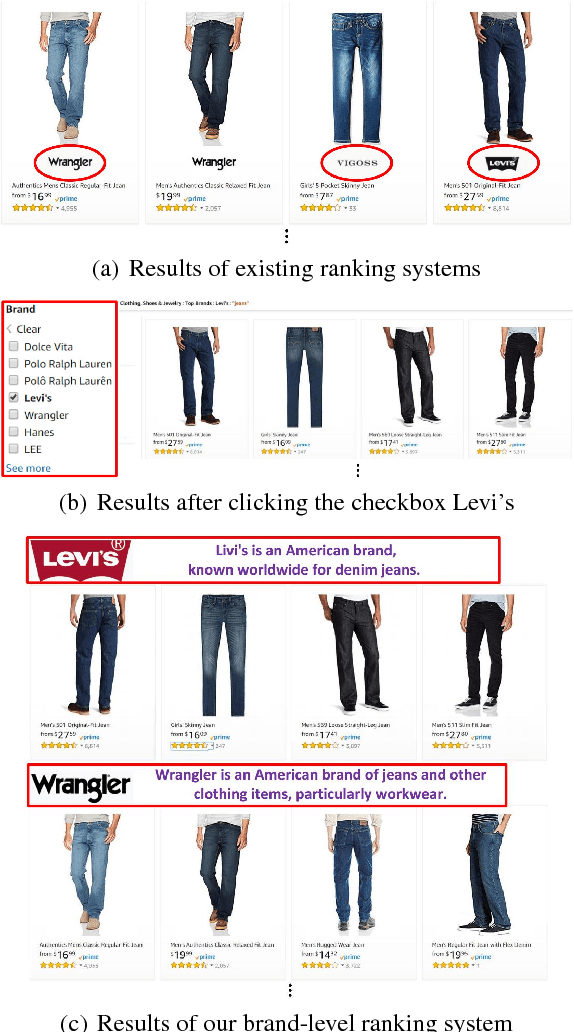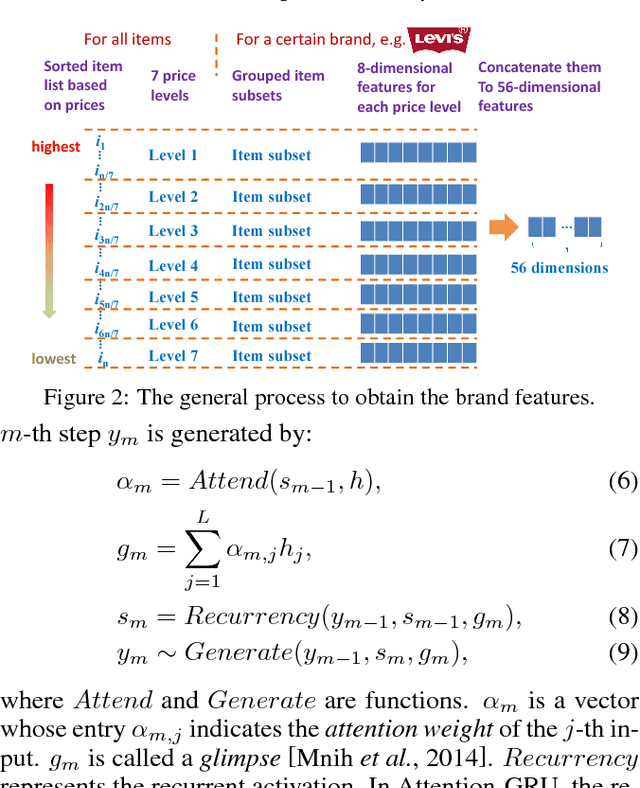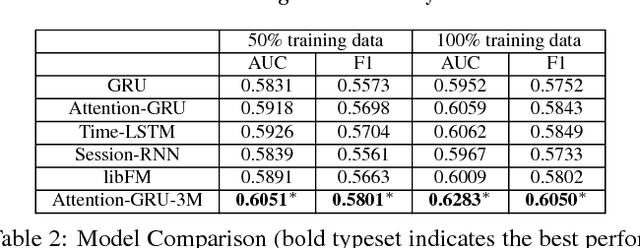Beidou Wang
Query-based Interactive Recommendation by Meta-Path and Adapted Attention-GRU
Jun 24, 2019



Abstract:Recently, interactive recommender systems are becoming increasingly popular. The insight is that, with the interaction between users and the system, (1) users can actively intervene the recommendation results rather than passively receive them, and (2) the system learns more about users so as to provide better recommendation. We focus on the single-round interaction, i.e. the system asks the user a question (Step 1), and exploits his feedback to generate better recommendation (Step 2). A novel query-based interactive recommender system is proposed in this paper, where \textbf{personalized questions are accurately generated from millions of automatically constructed questions} in Step 1, and \textbf{the recommendation is ensured to be closely-related to users' feedback} in Step 2. We achieve this by transforming Step 1 into a query recommendation task and Step 2 into a retrieval task. The former task is our key challenge. We firstly propose a model based on Meta-Path to efficiently retrieve hundreds of query candidates from the large query pool. Then an adapted Attention-GRU model is developed to effectively rank these candidates for recommendation. Offline and online experiments on Taobao, a large-scale e-commerce platform in China, verify the effectiveness of our interactive system. The system has already gone into production in the homepage of Taobao App since Nov. 11, 2018 (see https://v.qq.com/x/page/s0833tkp1uo.html on how it works online). Our code and dataset are public in https://github.com/zyody/QueryQR.
A Brand-level Ranking System with the Customized Attention-GRU Model
Aug 11, 2018



Abstract:In e-commerce websites like Taobao, brand is playing a more important role in influencing users' decision of click/purchase, partly because users are now attaching more importance to the quality of products and brand is an indicator of quality. However, existing ranking systems are not specifically designed to satisfy this kind of demand. Some design tricks may partially alleviate this problem, but still cannot provide satisfactory results or may create additional interaction cost. In this paper, we design the first brand-level ranking system to address this problem. The key challenge of this system is how to sufficiently exploit users' rich behavior in e-commerce websites to rank the brands. In our solution, we firstly conduct the feature engineering specifically tailored for the personalized brand ranking problem and then rank the brands by an adapted Attention-GRU model containing three important modifications. Note that our proposed modifications can also apply to many other machine learning models on various tasks. We conduct a series of experiments to evaluate the effectiveness of our proposed ranking model and test the response to the brand-level ranking system from real users on a large-scale e-commerce platform, i.e. Taobao.
* 7 pages, 6 figures, 3 tables. Published in IJCAI 2018. Make some figures and tables more clear
Addressing the Item Cold-start Problem by Attribute-driven Active Learning
May 23, 2018



Abstract:In recommender systems, cold-start issues are situations where no previous events, e.g. ratings, are known for certain users or items. In this paper, we focus on the item cold-start problem. Both content information (e.g. item attributes) and initial user ratings are valuable for seizing users' preferences on a new item. However, previous methods for the item cold-start problem either 1) incorporate content information into collaborative filtering to perform hybrid recommendation, or 2) actively select users to rate the new item without considering content information and then do collaborative filtering. In this paper, we propose a novel recommendation scheme for the item cold-start problem by leverage both active learning and items' attribute information. Specifically, we design useful user selection criteria based on items' attributes and users' rating history, and combine the criteria in an optimization framework for selecting users. By exploiting the feedback ratings, users' previous ratings and items' attributes, we then generate accurate rating predictions for the other unselected users. Experimental results on two real-world datasets show the superiority of our proposed method over traditional methods.
 Add to Chrome
Add to Chrome Add to Firefox
Add to Firefox Add to Edge
Add to Edge